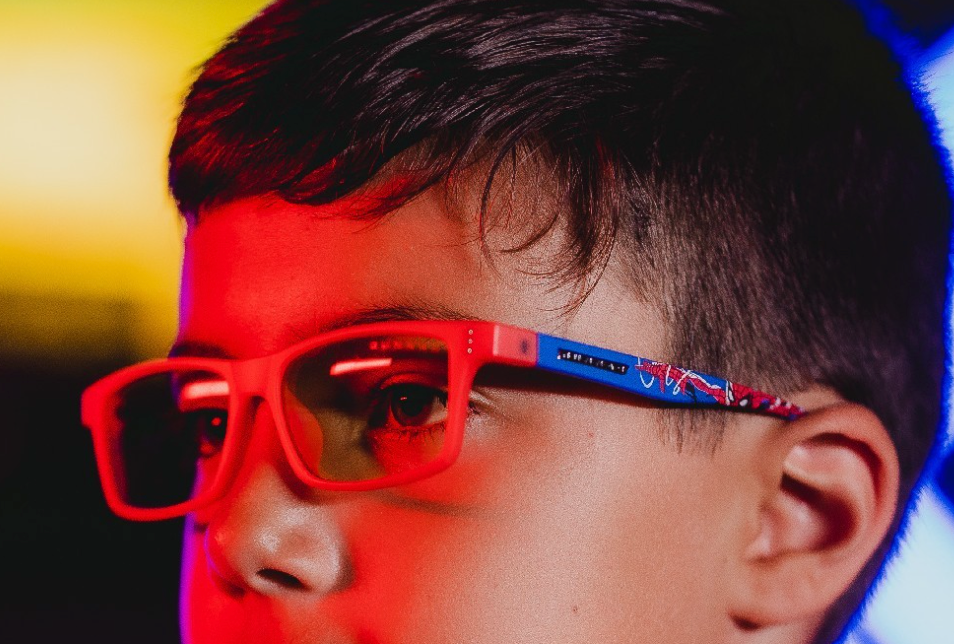Children are exposed to screens more than ever before. From smartphones and tablets to computers and televisions, screens have become an integral part of daily life for many families. While technology offers numerous benefits, excessive screen time can have adverse effects on children's eye health. In this comprehensive guide, we'll explore the impact of screen time on young eyes and provide practical tips for parents to help protect their children's vision.
SHOP GUNNAR BLUE LIGHT GLASSES
Understanding the Impact of Screen Time
Myth: Screen Time Has No Effect on Children's Eyes
Contrary to popular belief, excessive screen time can have a significant impact on children's eye health. The American Academy of Pediatrics recommends limiting screen time for children aged 2 to 5 to no more than one hour per day of high-quality programming. For older children, screen time should be limited to no more than two hours per day. Prolonged exposure to screens can lead to digital eye strain, dry eyes, and other vision-related problems.
Fact: Blue Light Exposure Can Disrupt Sleep Patterns
One of the primary concerns associated with excessive screen time is exposure to blue light. Blue light is emitted by digital screens and has been shown to suppress the production of melatonin, a hormone that regulates sleep-wake cycles. This can lead to difficulty falling asleep and disrupted sleep patterns, which can have a negative impact on children's overall health and well-being.
SHOP GUNNAR BLUE LIGHT GLASSES
Strategies for Reducing Screen Time
Myth: It's Impossible to Limit Children's Screen Time
While it may seem challenging to limit children's screen time in today's digital world, there are several strategies that parents can implement to help reduce their children's exposure to screens. Setting clear and consistent screen time limits, establishing tech-free zones in the home, and encouraging outdoor play and other non-screen activities can all help reduce reliance on screens.
Fact: Parental Monitoring Is Key
Parents play a crucial role in monitoring and managing their children's screen time. By actively engaging with their children and setting positive examples of healthy screen use, parents can help instill good habits and teach their children to use technology responsibly. Additionally, parental control features available on many devices can help limit access to inappropriate content and enforce screen time limits.
SHOP GUNNAR BLUE LIGHT GLASSES
Promoting Healthy Screen Habits
Myth: All Screen Time Is Harmful
While excessive screen time can have negative effects on children's eye health, not all screen time is inherently harmful. Educational and interactive screen time can provide valuable learning opportunities for children when used in moderation. The key is to strike a balance between screen time and other activities that promote physical activity, social interaction, and creative play.
Fact: Encouraging Breaks and Eye Exercises
To help mitigate the effects of screen time on young eyes, parents can encourage their children to take regular breaks and practice eye exercises. The 20-20-20 rule, which involves taking a 20-second break every 20 minutes to look at something 20 feet away, can help reduce eye strain and prevent fatigue. Additionally, simple eye exercises such as focusing on distant objects and blinking frequently can help keep children's eyes healthy and comfortable.
As technology continues to play an increasingly prominent role in children's lives, it's essential for parents to be proactive in protecting their children's eye health. By understanding the impact of screen time on young eyes and implementing practical strategies for reducing screen time and promoting healthy screen habits, parents can help safeguard their children's vision and overall well-being in the digital age. Remember, a little screen time moderation today can go a long way toward preserving your child's vision for the future.





 UK site
UK site EU site
EU site US site
US site Canada site
Canada site